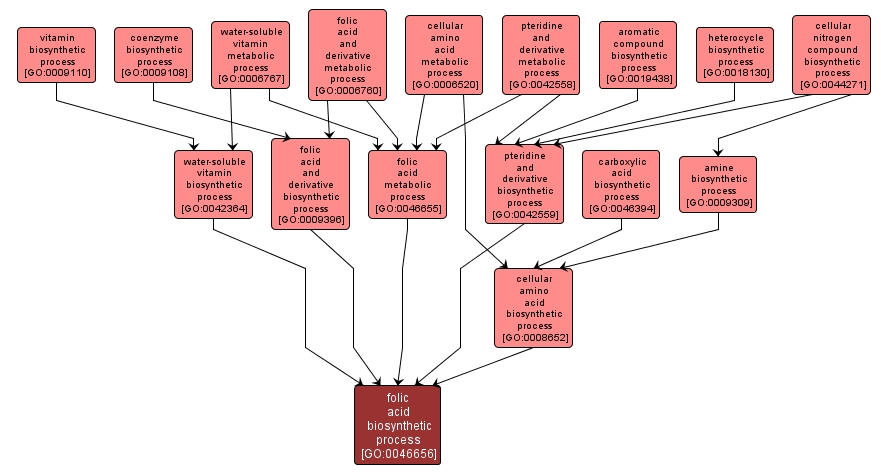GO TERM SUMMARY
|
| Name: |
folic acid biosynthetic process |
| Acc: |
GO:0046656 |
| Aspect: |
Biological Process |
| Desc: |
The chemical reactions and pathways resulting in the formation of folic acid, pteroylglutamic acid. |
Synonyms:
- folate biosynthesis
- vitamin B9 biosynthesis
- folic acid biosynthesis
- folic acid synthesis
- vitamin M biosynthesis
- folic acid formation
- folic acid anabolism
- folate biosynthetic process
- vitamin B9 biosynthetic process
- vitamin M biosynthetic process
|
|

|
INTERACTIVE GO GRAPH
|














